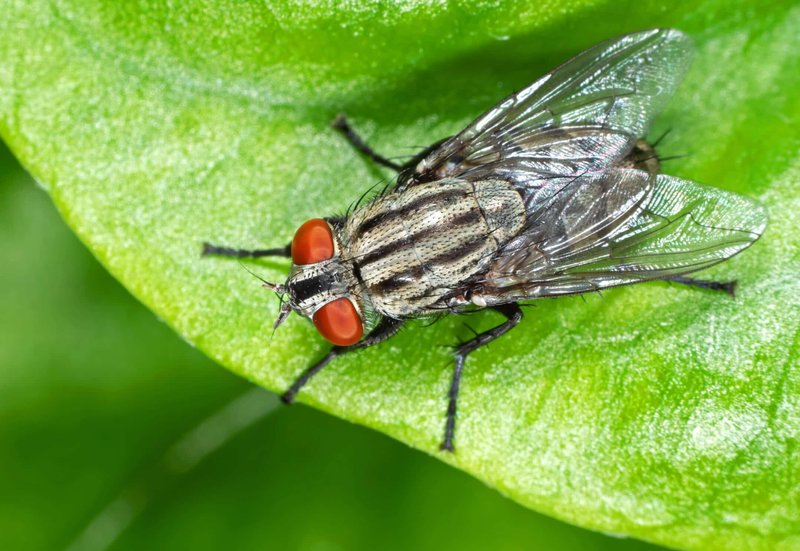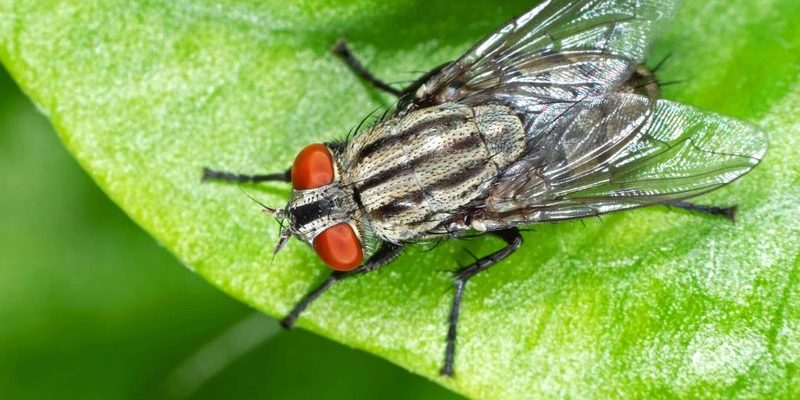
So, next time you swat at one that’s buzzing around, remember there’s a whole world of interesting facts about these little guys. Let’s dive into the top 10 fascinating facts about flies that might just change your perception of them!
1. Flies Are Surprisingly Old
You might be amazed to learn that flies have been around for a very long time—over 200 million years! That’s older than dinosaurs! These tiny insects first appeared during the Triassic era. Imagine them buzzing around while massive reptiles roamed the Earth. Their evolution over millions of years has enabled them to adapt to various environments, which is why they can be found almost everywhere you look.
Their longevity on this planet speaks volumes about their resilience. Even after mass extinctions, flies managed to bounce back and evolve into the myriad of species we see today. Honestly, it’s like they have a secret recipe for survival.
2. The Amazing Speed of Flies
Have you ever tried to swat a fly and missed? It’s not just bad luck; it’s their incredible reflexes! Flies can take off and accelerate at a speed of about 5 feet per second. To put that in perspective, if you were a fly, it would be like you could sprint the length of a football field in less than a minute!
Their remarkable speed is thanks to their compound eyes, which can detect movement much faster than human eyes. This means they can see you coming and quickly dodge your swatter. It feels a bit like a game of tag—you know you’re it, but they always seem to win.
3. Flies Have Unique Mouthparts
When you think about how flies eat, you might picture a traditional mouth like most animals have. However, flies have specially adapted mouthparts that work differently. They don’t chew their food; instead, they “spit” on it to break it down. This is called liquefaction.
They can only consume liquids, which is why you often see them on spilled soda or rotten fruit—yum! They don’t have teeth; instead, they use a long tube called a proboscis to drink up their meals. So, the next time a fly lands on your food, remember, it’s just trying to digest its dinner!
4. They’re Excellent Pollinators
Many people associate bees with pollination, but flies deserve some credit too! Flower flies, or hoverflies, are particularly crucial for this process. They may not look as cute as bees, but they help fertilize countless plants by transferring pollen from flower to flower.
Interestingly, flies are often attracted to flowers that emit strong odors, especially ones that resemble decaying matter. This is their way of ensuring they find the nutrients they need. So next time you see a fly buzzing around flowers, know that it’s doing important work—even if it doesn’t look as charming as a bee!
5. Flies Have Short Lifespans, But They Make the Most of Them
You might think that living in a world full of swats would lead to a short life. And you’d be right! The average lifespan of a common housefly is just 15 to 30 days. But here’s the kicker—they can lay hundreds of eggs in that short time.
A female fly can produce up to 500 eggs in her lifetime. This means that even in their brief lives, they can make a significant impact on the environment. It’s a bit like a candle burning bright, even if only for a little while. Flies are all about making the most of the time they have.
6. Flies Can Taste with Their Feet
You might be wondering how flies enjoy their meals without a proper mouth. Well, here’s the thing: they can taste with their feet! When a fly lands on a food source, receptors in their feet help them determine whether it’s tasty or not.
Once they figure out it’s a delectable treat, they’ll start feeding right away. In a way, it’s like they walk into a café, step onto the menu, and—boom!—know what they want. This unique tasting ability helps them make quick decisions about where to eat.
7. They Communicate Through Buzzing
Have you ever noticed that buzzing sound flies make? They use it as a form of communication. The buzzing comes from their rapid wing beats, which can happen up to 1,000 times per minute!
This buzzing can signal everything from mating calls to territorial warnings. Think of it like their version of gossip; they’re constantly sharing information. So the next time you hear that familiar buzz, just remember—it’s not just random noise; it’s their social network in action.
8. Flies Are Masters of Hygiene (Sort of)
While it might seem counterintuitive given their love for garbage, flies are incredibly meticulous about their hygiene! They spend a great deal of time grooming themselves. They need to keep their wings and legs clean to maintain their ability to fly smoothly.
You might be wondering why they hang around waste if they’re so clean! The truth is, their grooming habits allow them to feed on decaying matter, which is rich in nutrients. It’s kind of like being a chef who loves messy ingredients yet always keeps a tidy kitchen.
9. Flies Can Be Useful in Forensics
Believe it or not, flies are used in forensic science! Their life cycles are incredibly predictable, making them vital in estimating the time of death in criminal investigations. Forensic entomology, the study of insects related to legal investigations, often involves analyzing the development stages of flies on a corpse.
This means that those pesky flies around a crime scene might actually be helping solve mysteries. It’s fascinating to think how something so small can play such a huge role in understanding what happened in a tragic event.
10. There Are Over 100,000 Species of Flies
Flies aren’t just one type; there are over 100,000 species of flies! From houseflies to fruit flies and even massive horseflies, each species has unique behaviors and adaptations. Each one plays a role in the ecosystem, contributing to decomposition, pollination, and serving as food for other animals.
So when you swat at that fly buzzing in your kitchen, remember you might be swatting away one of many incredible species that collectively make the world a more interesting place.
In conclusion, flies might be small and often annoying, but they pack a punch when it comes to fascinating facts! Whether it’s their incredible speed, unique mouthparts, or roles in pollination and forensics, they truly are one of nature’s marvels. Next time you encounter a fly, take a moment to appreciate the little guy—who knows what incredible stories they bring along with them?

